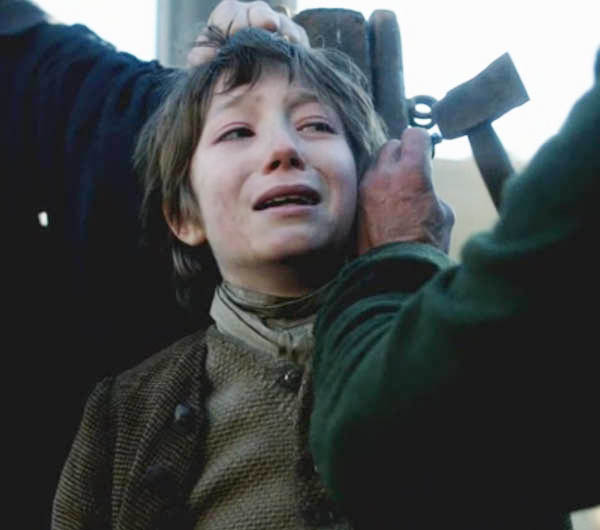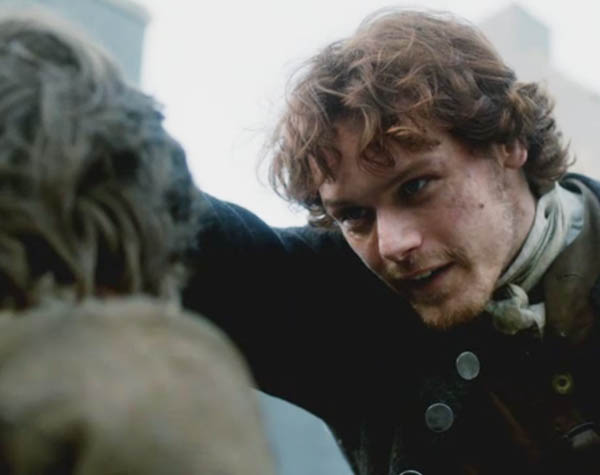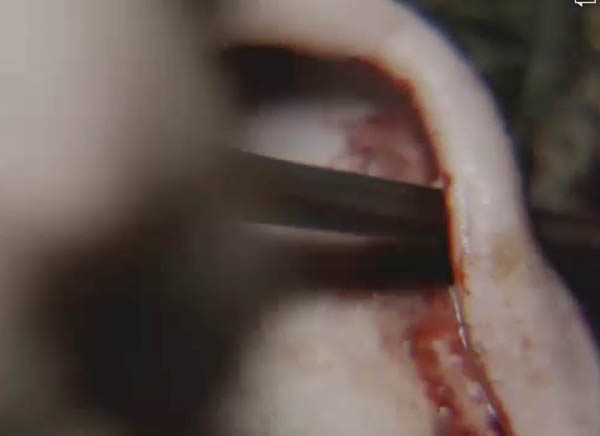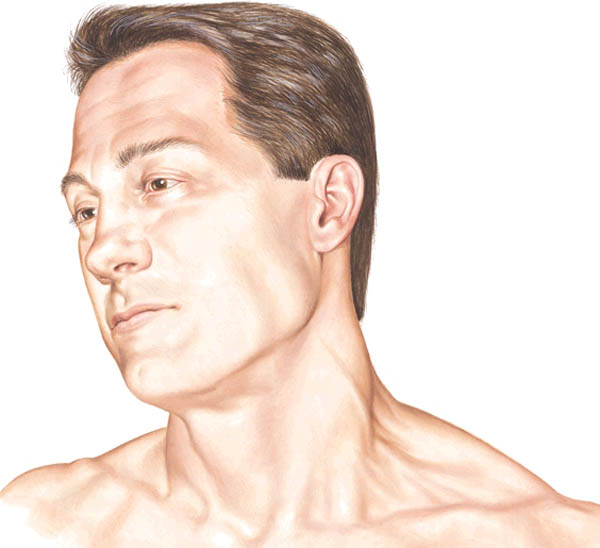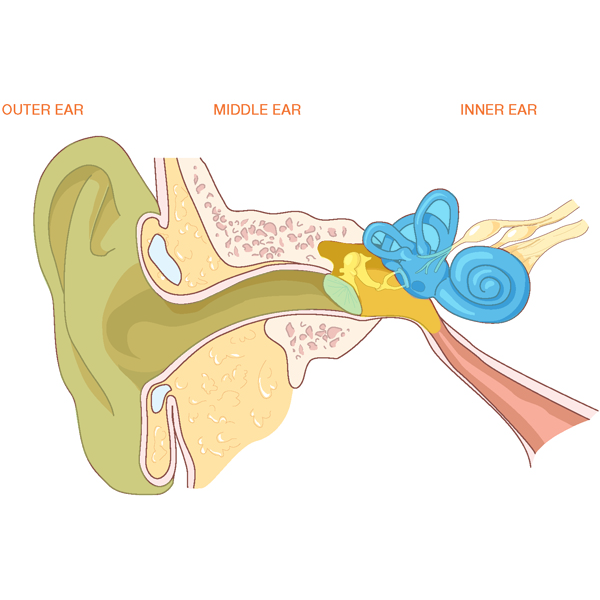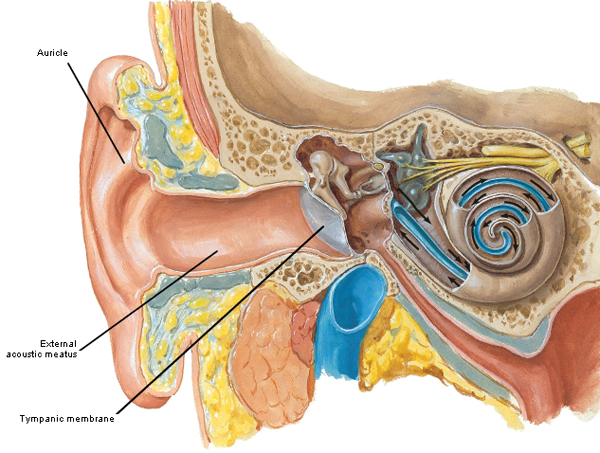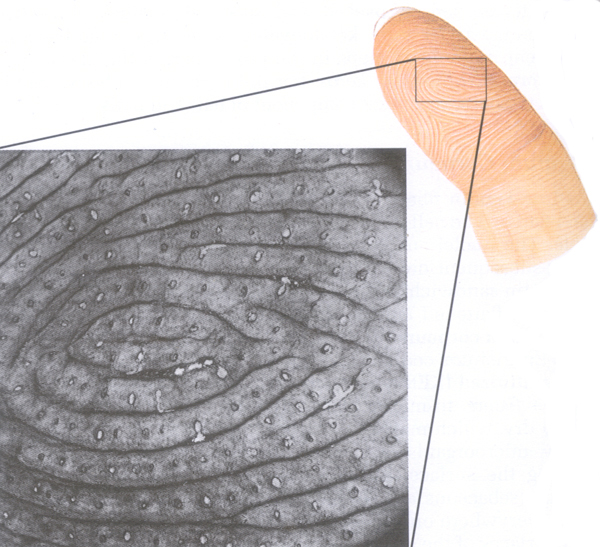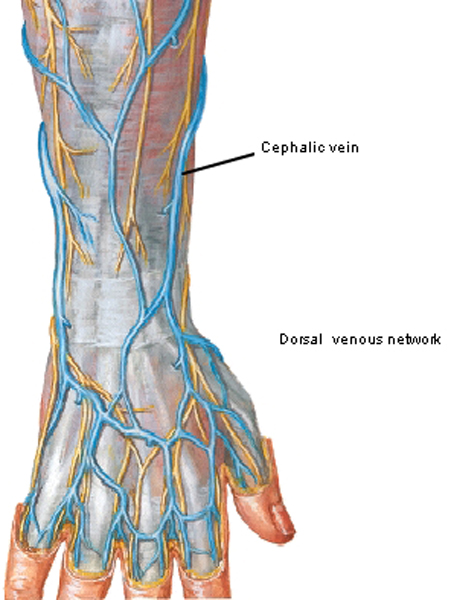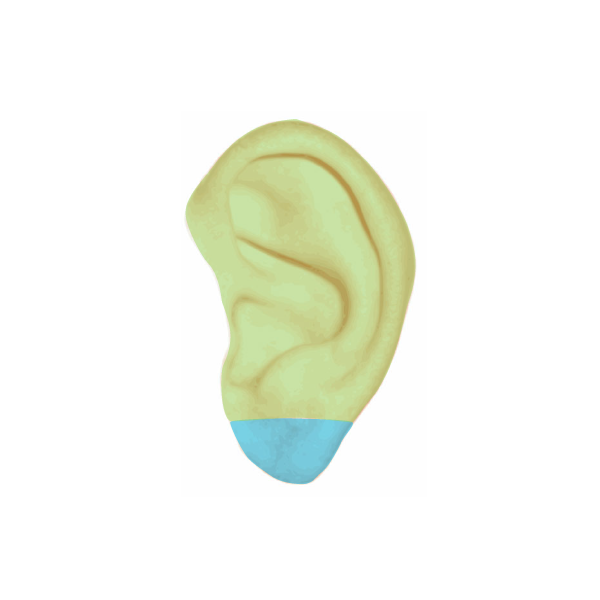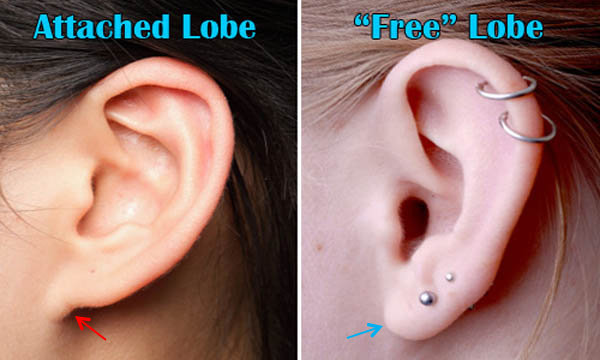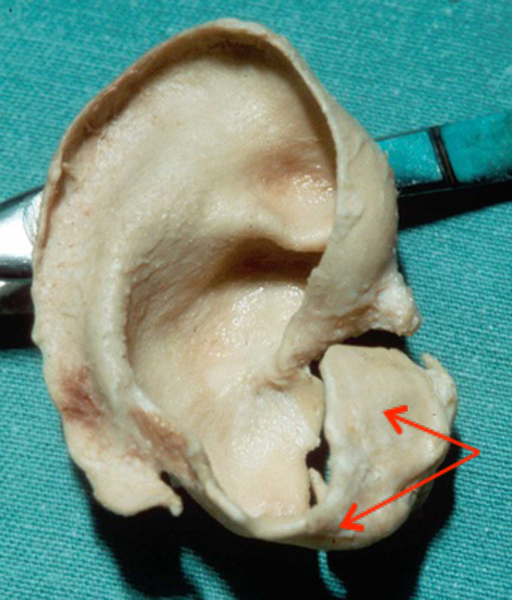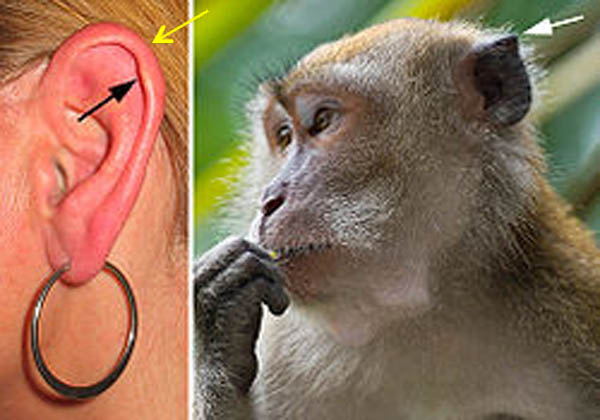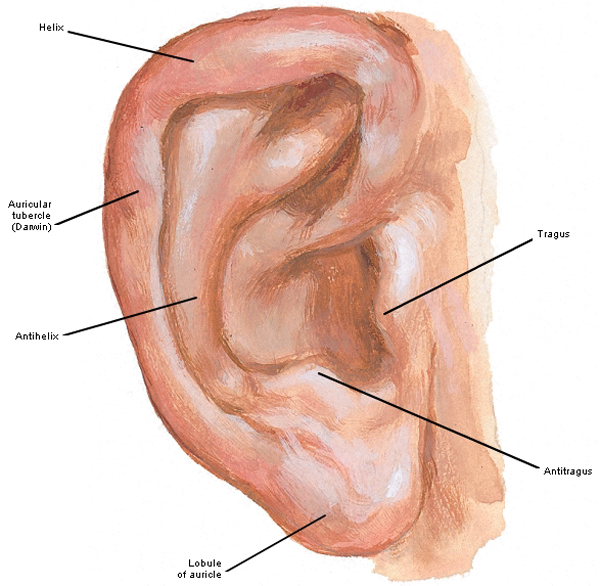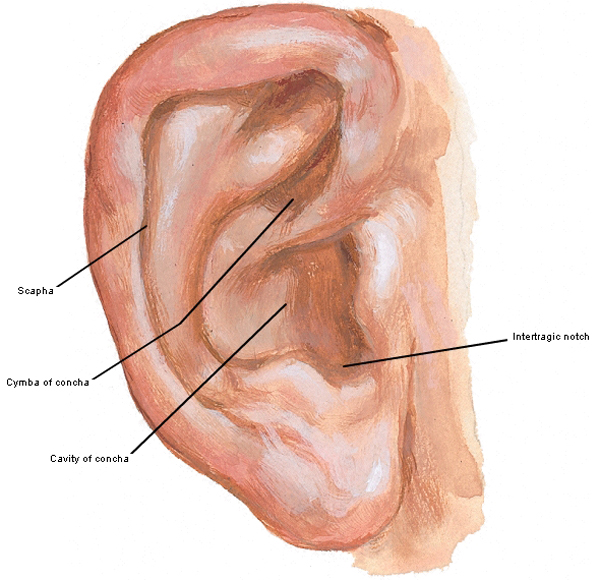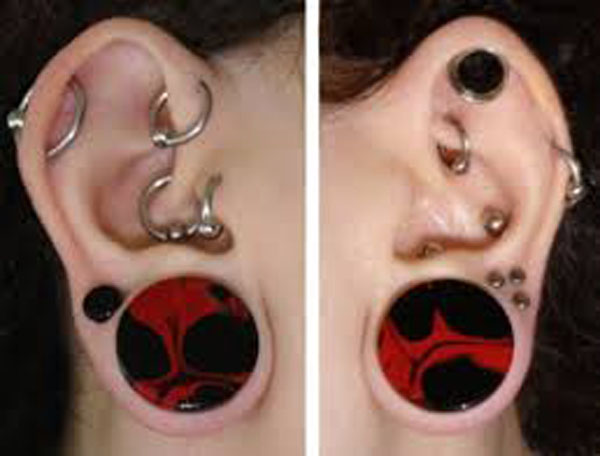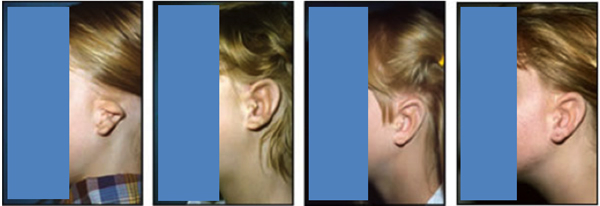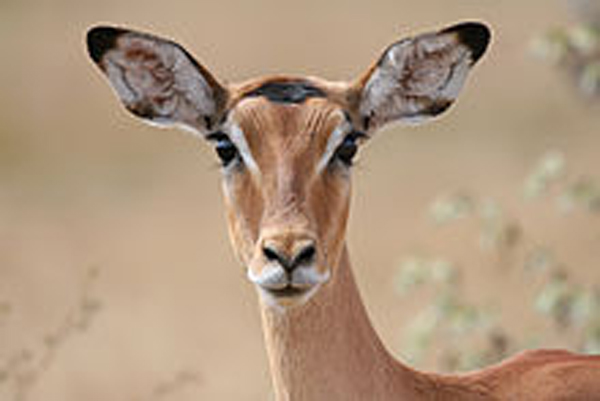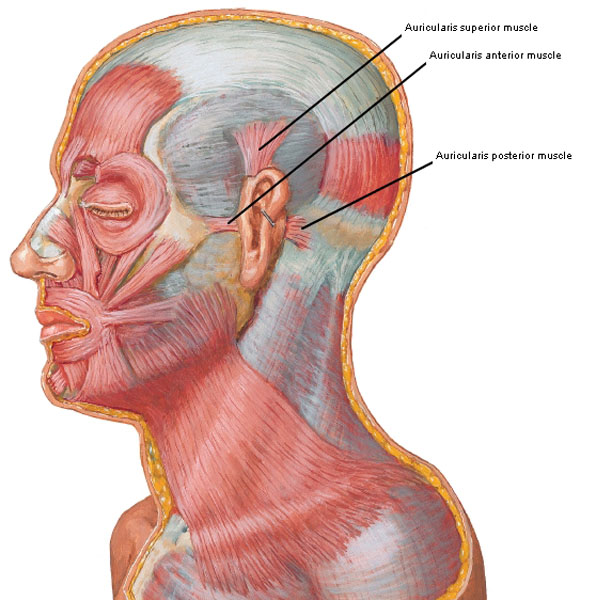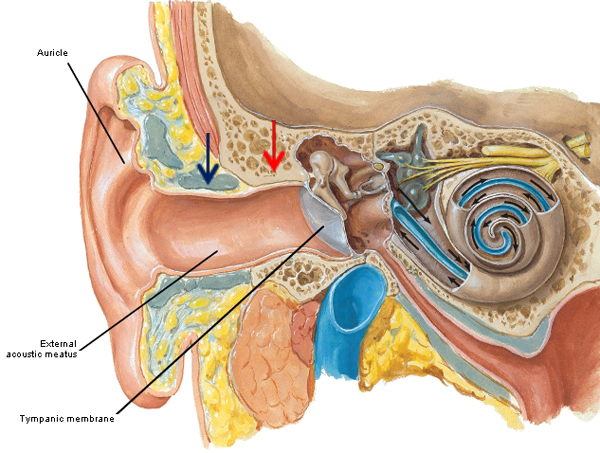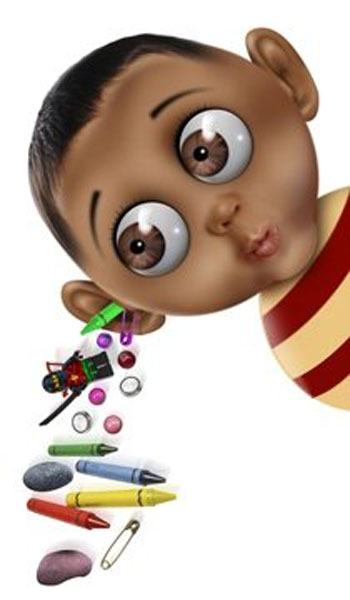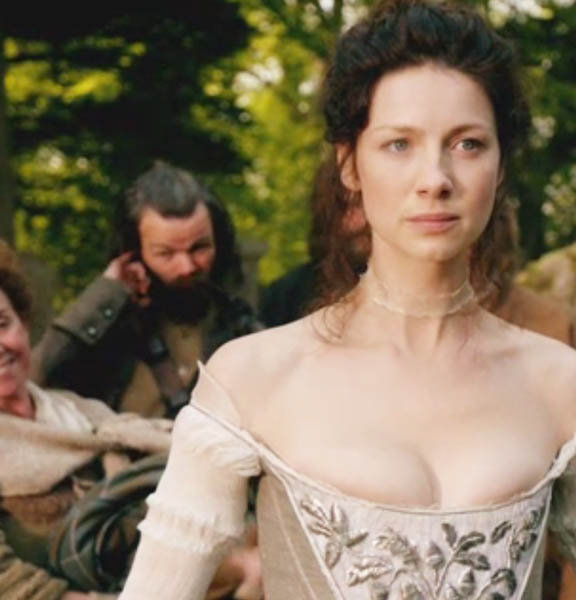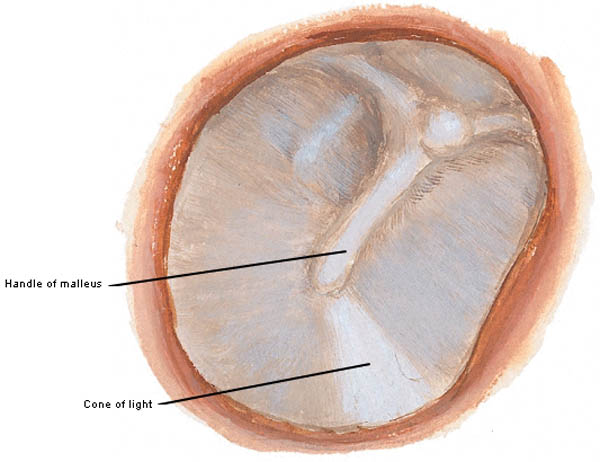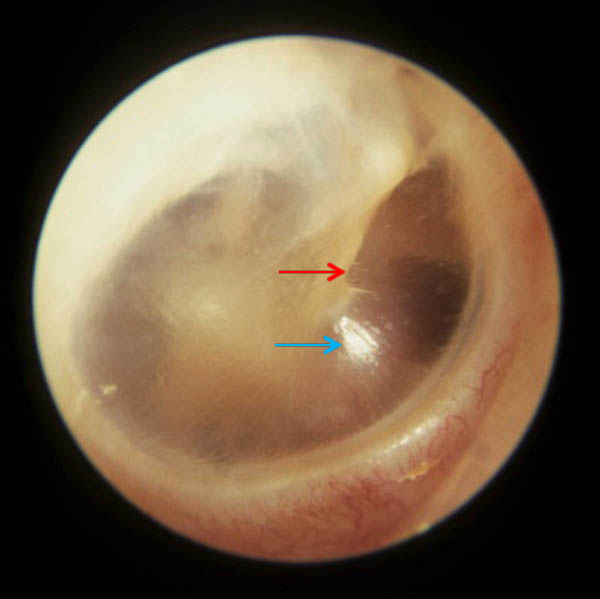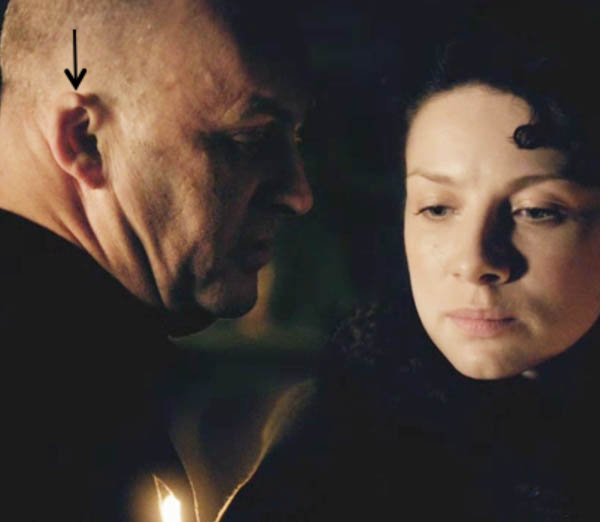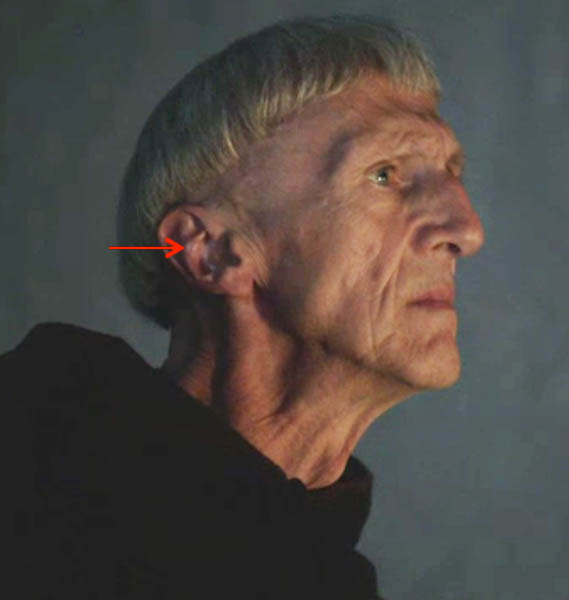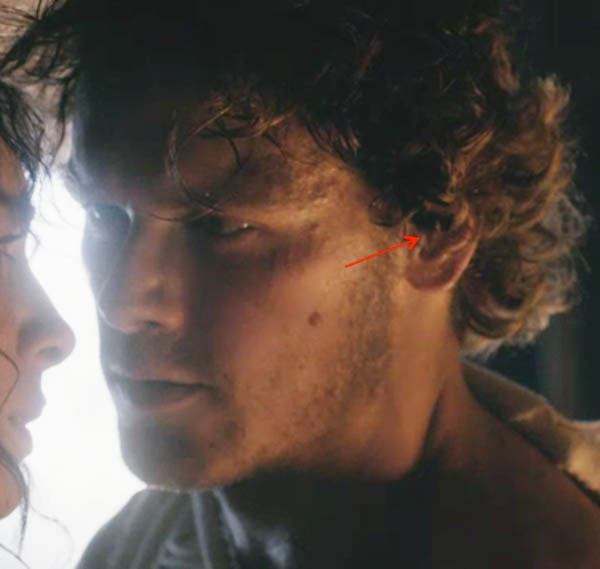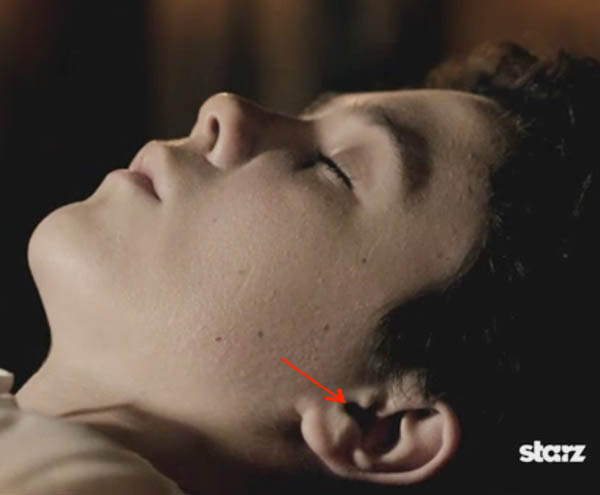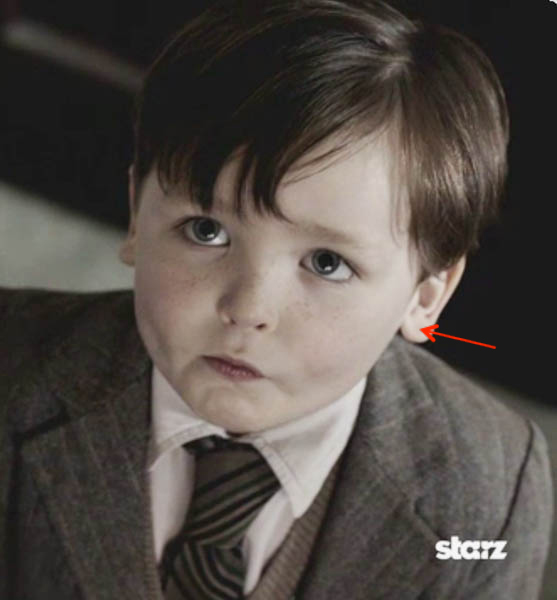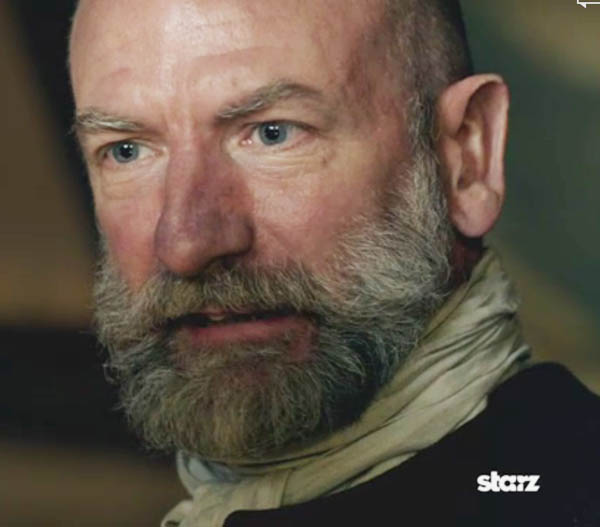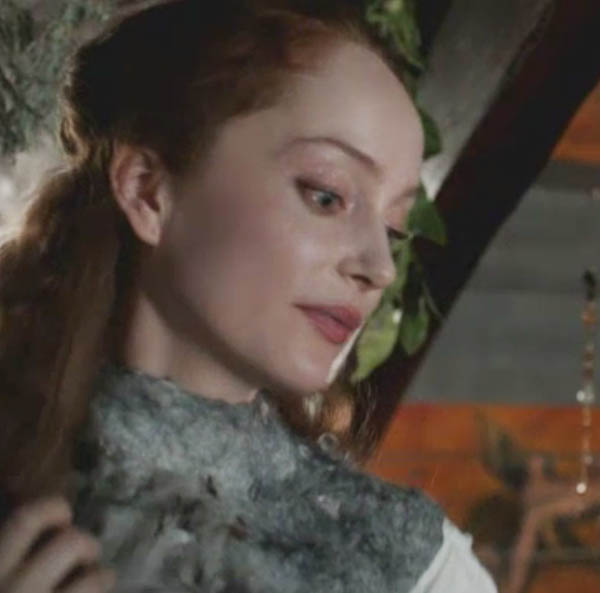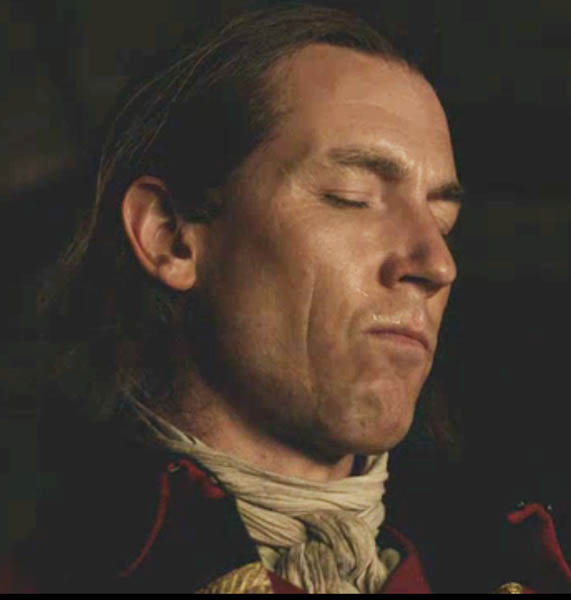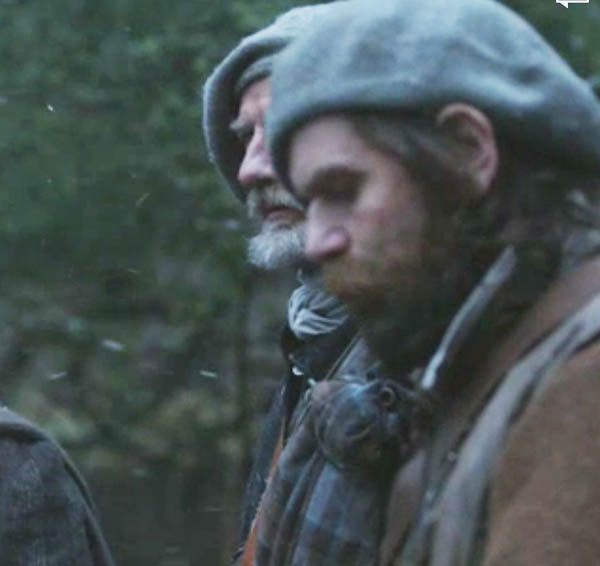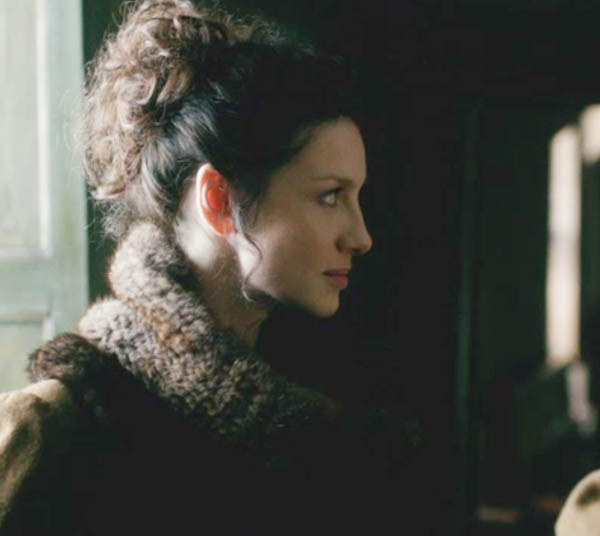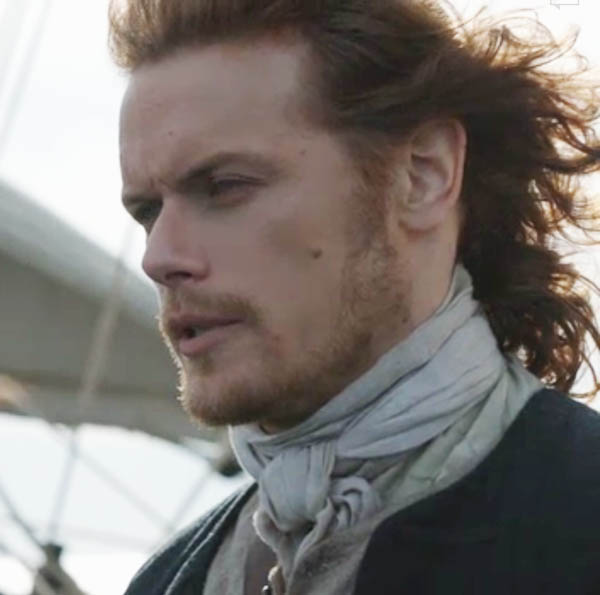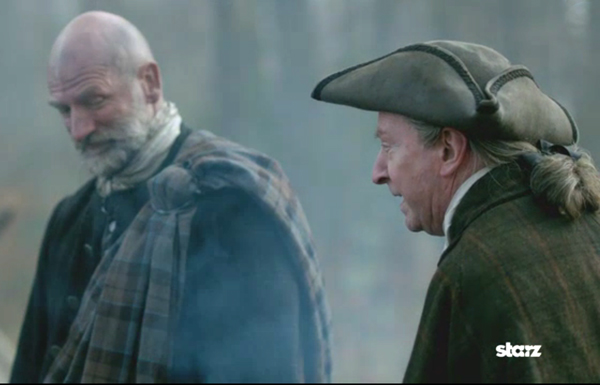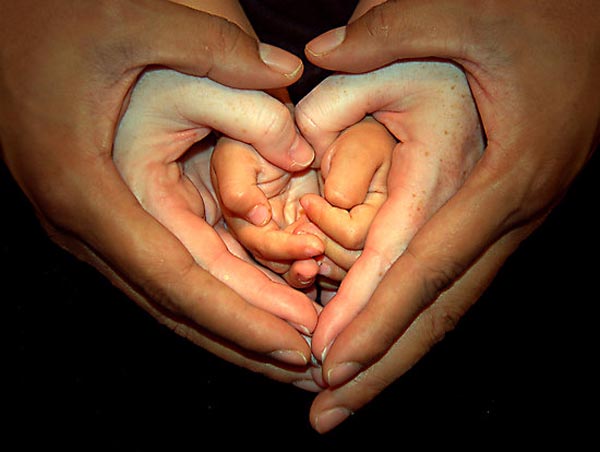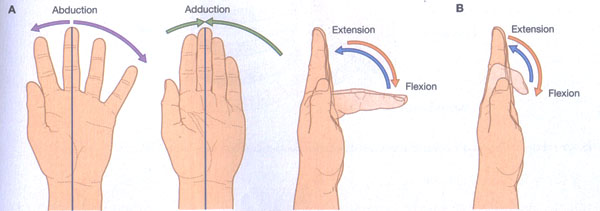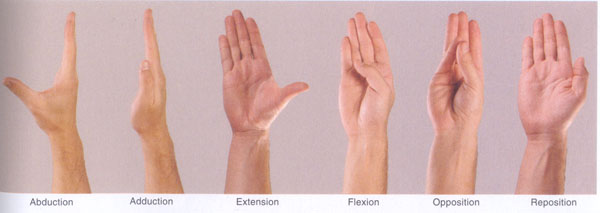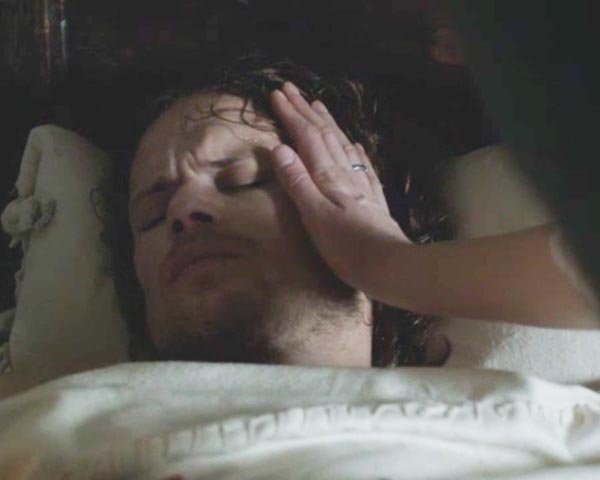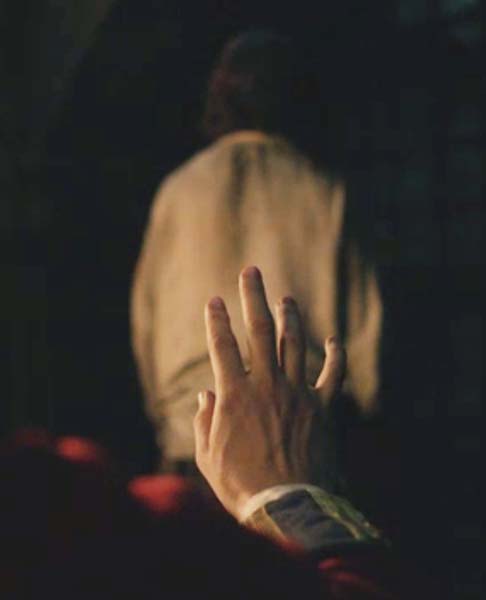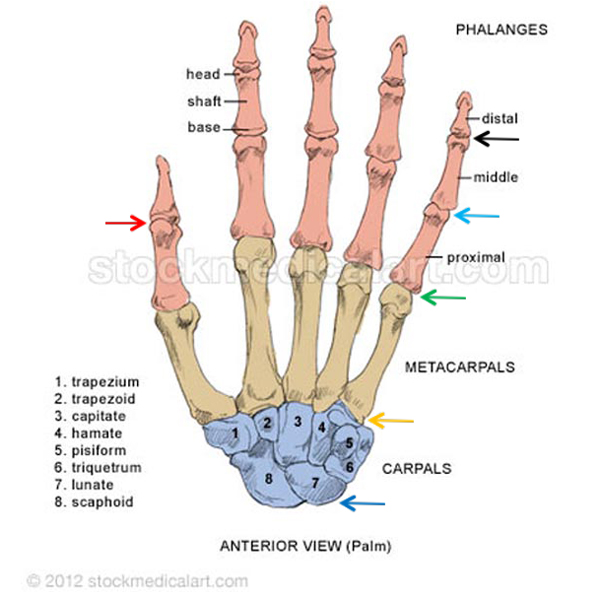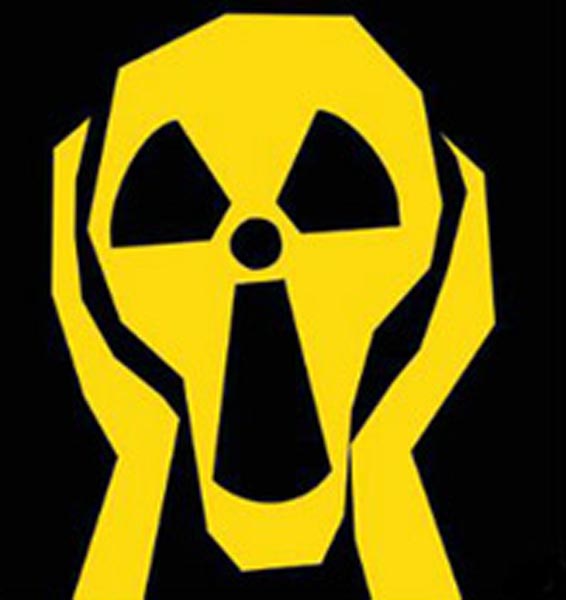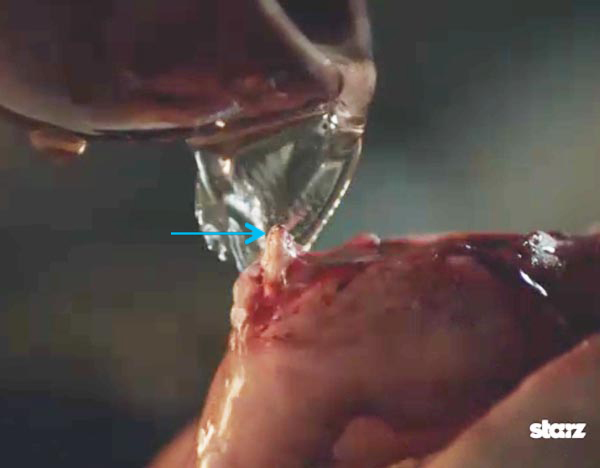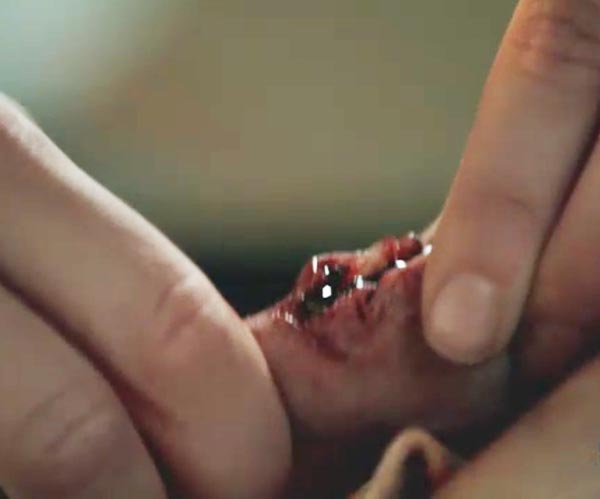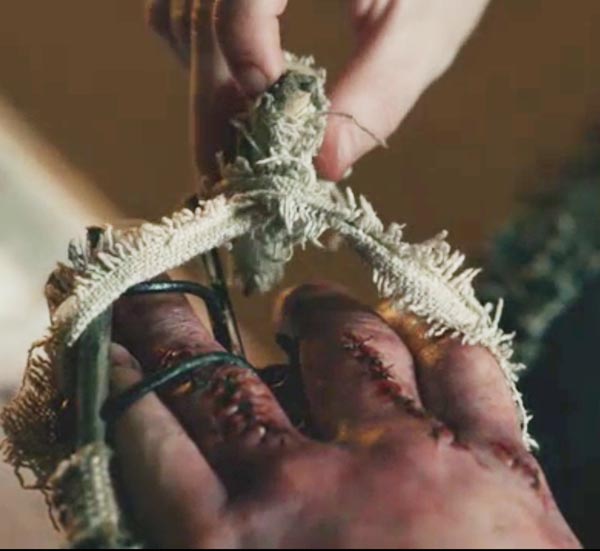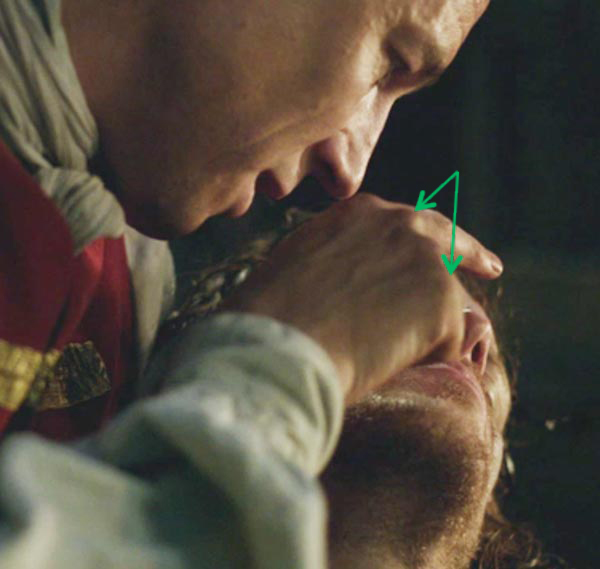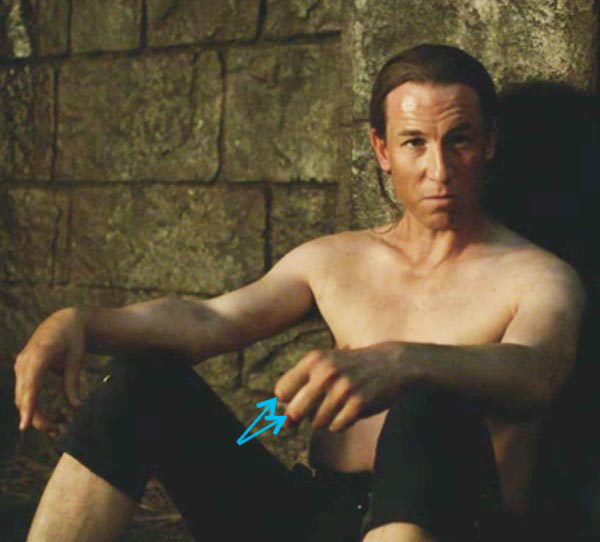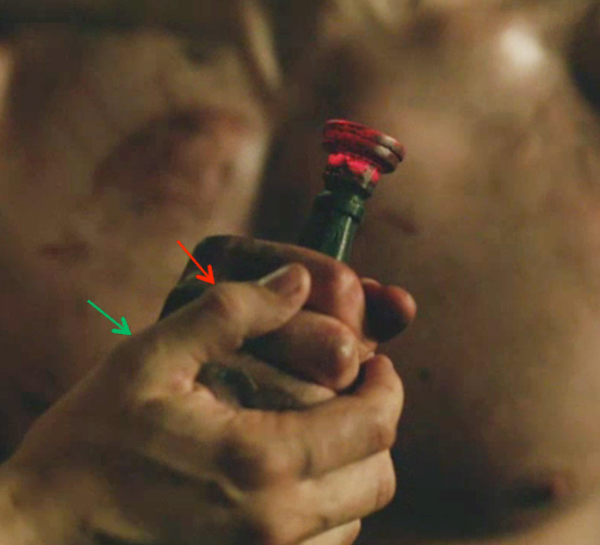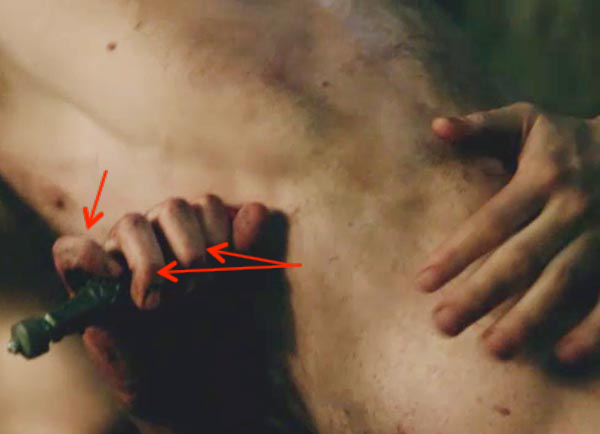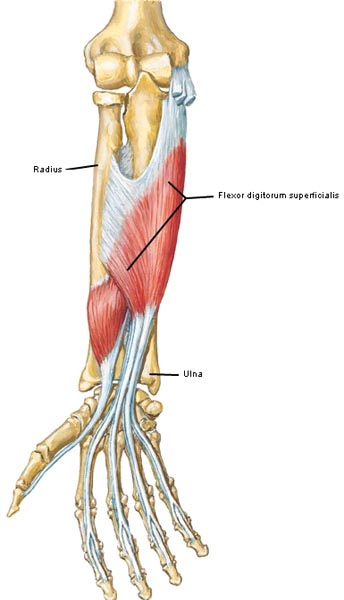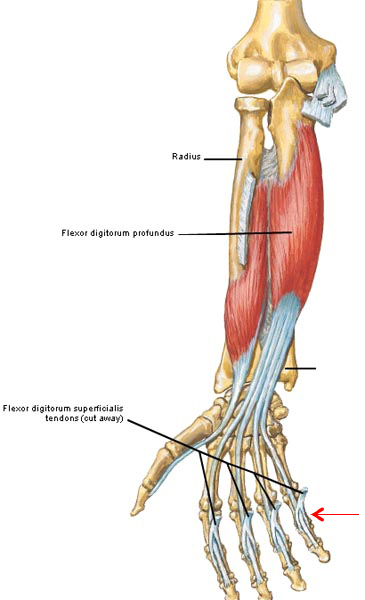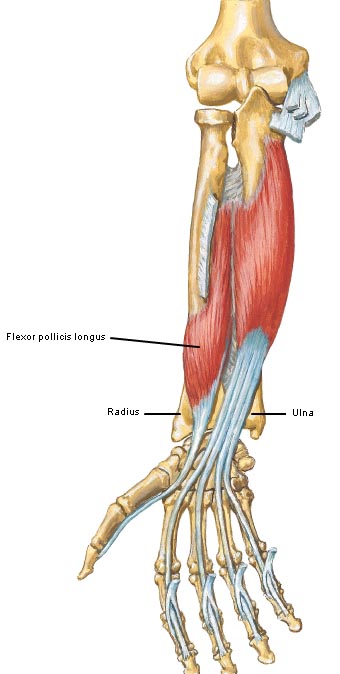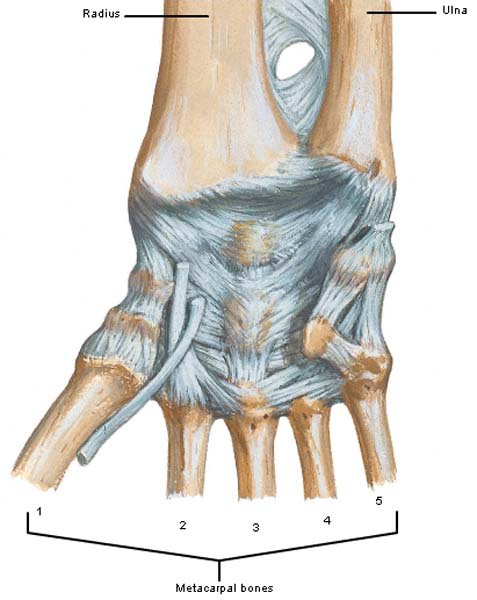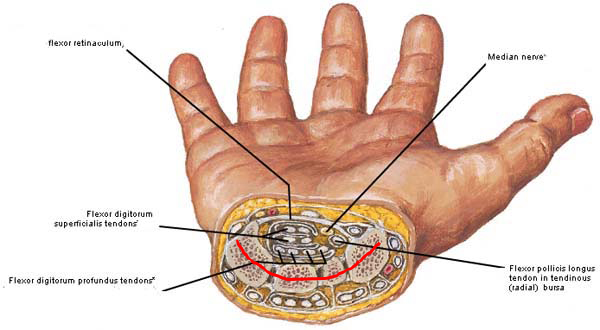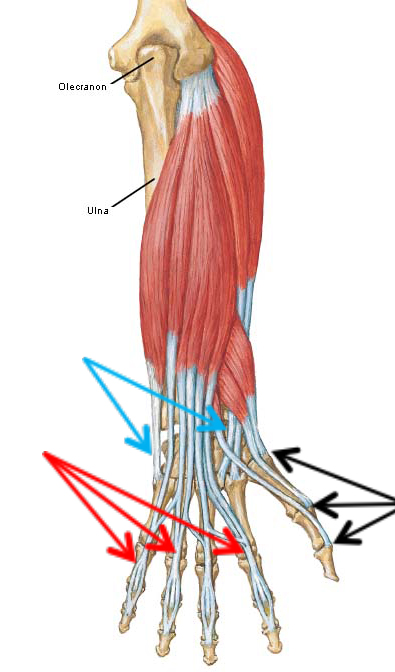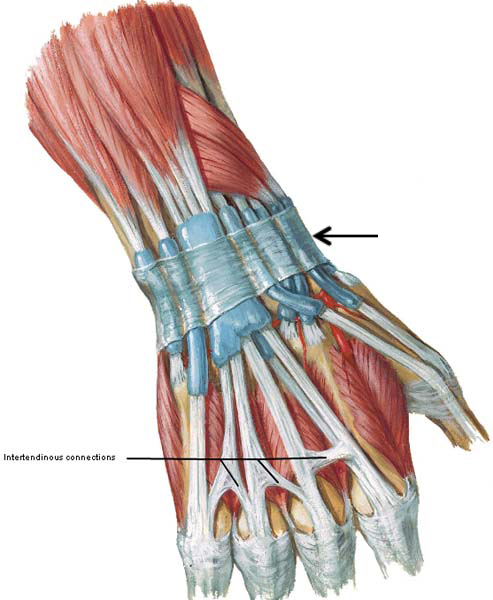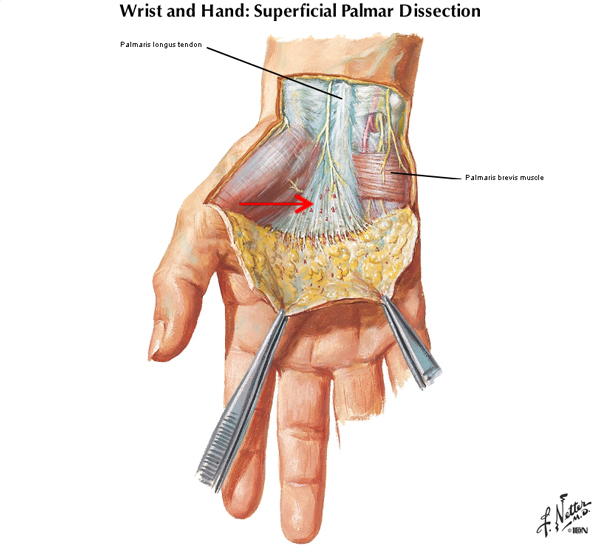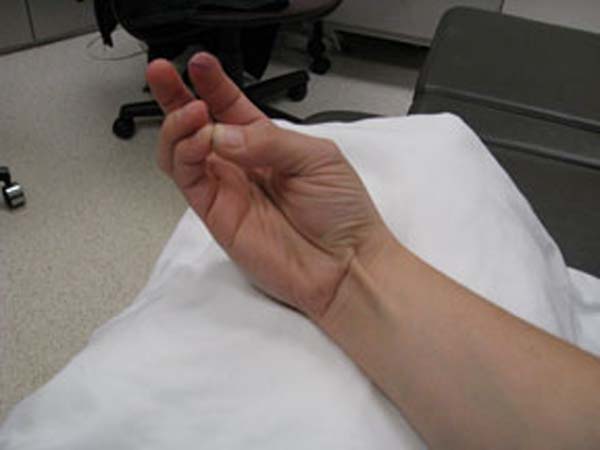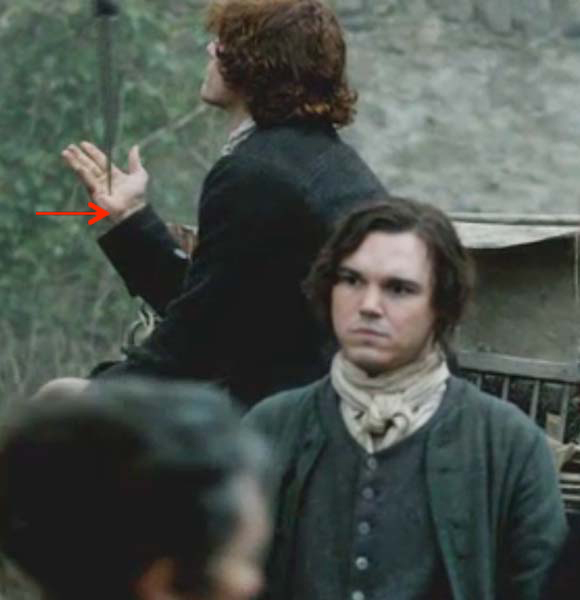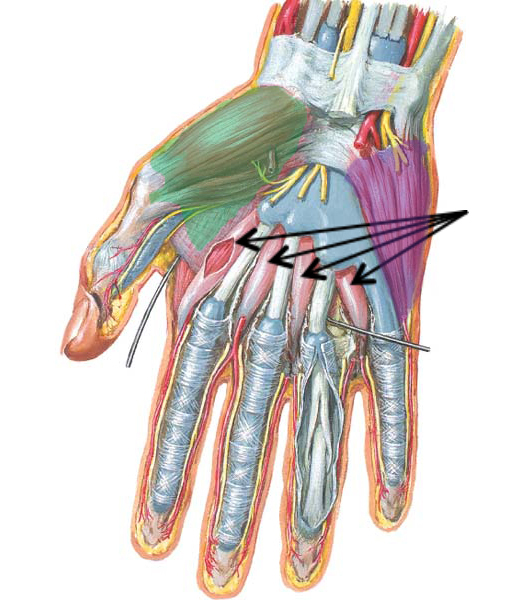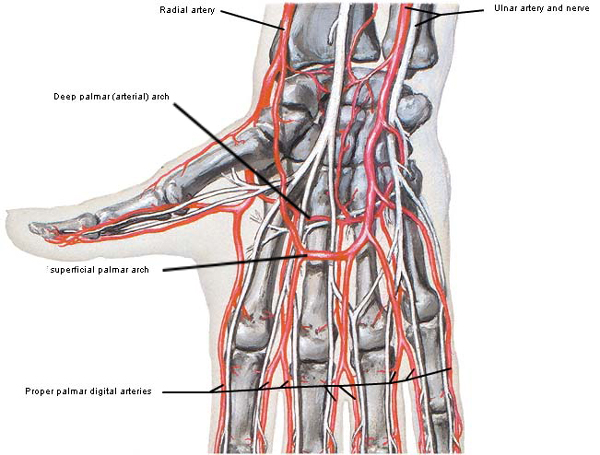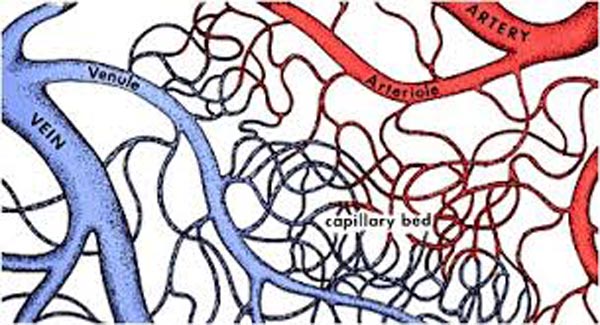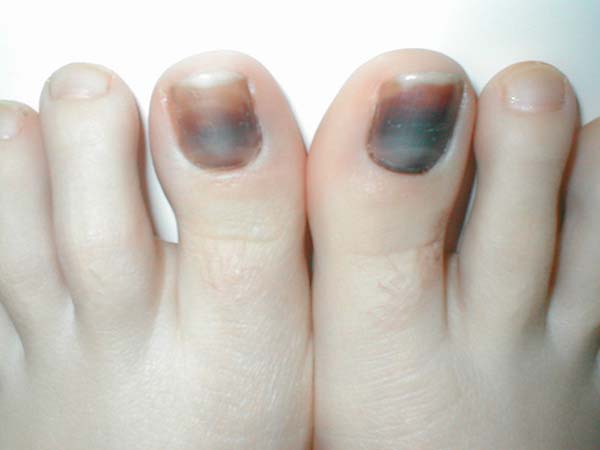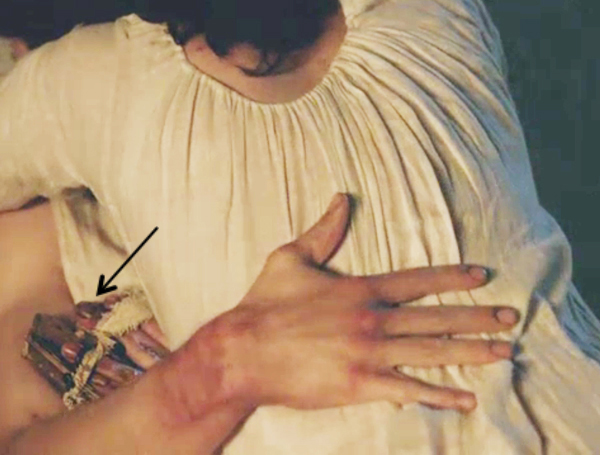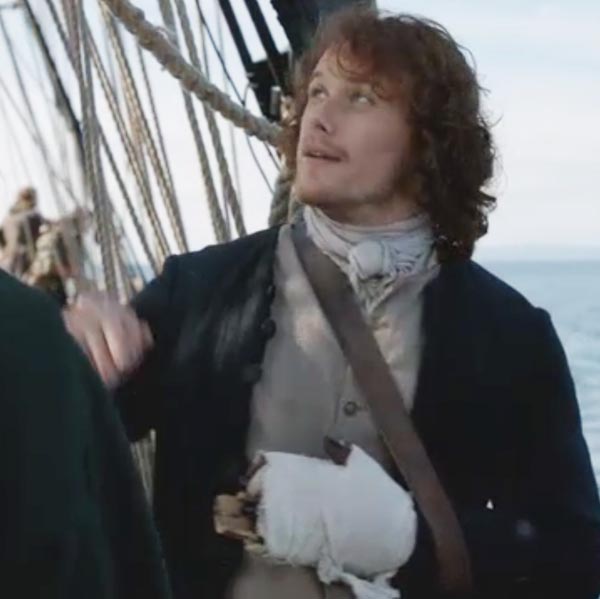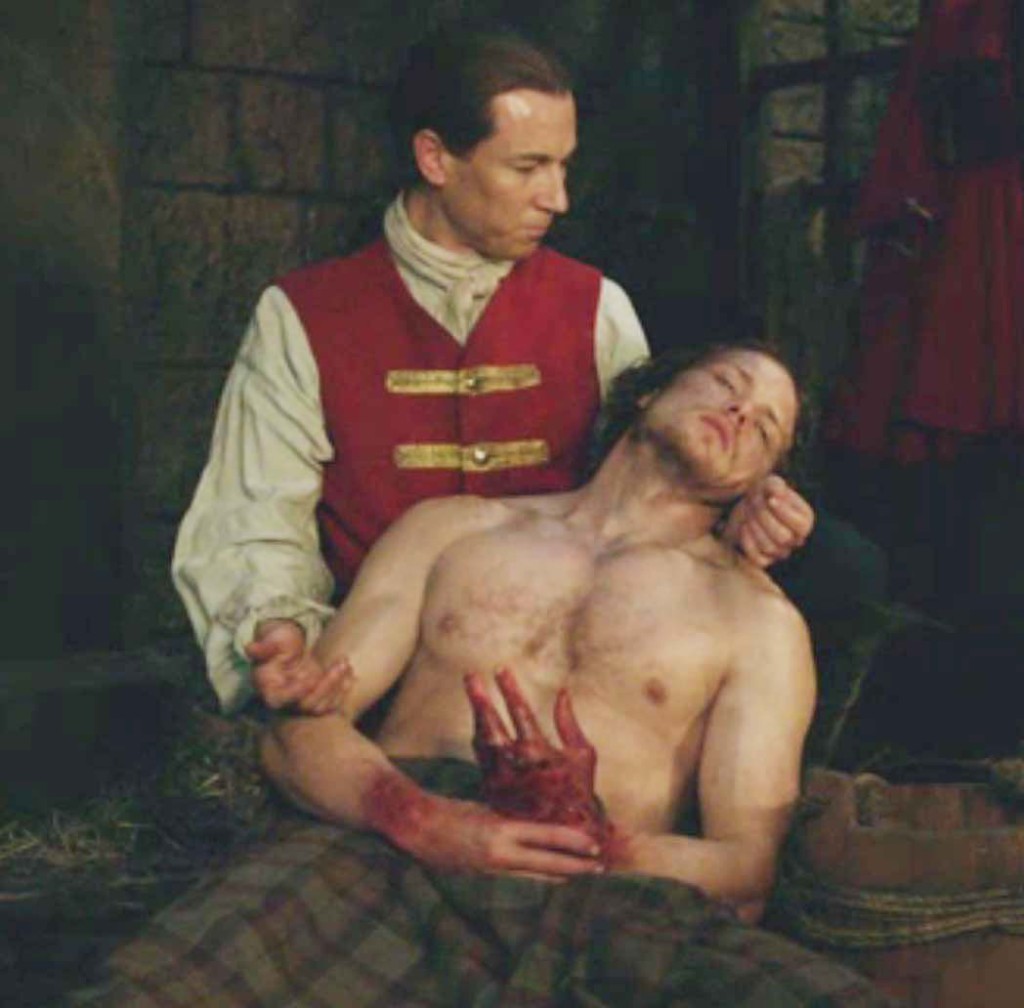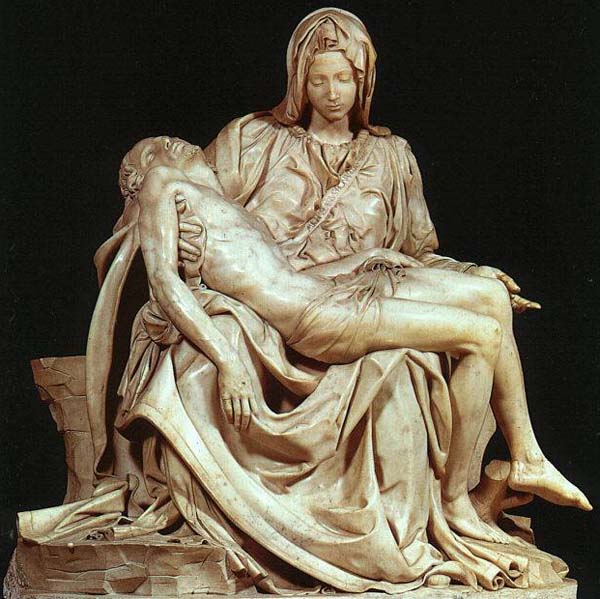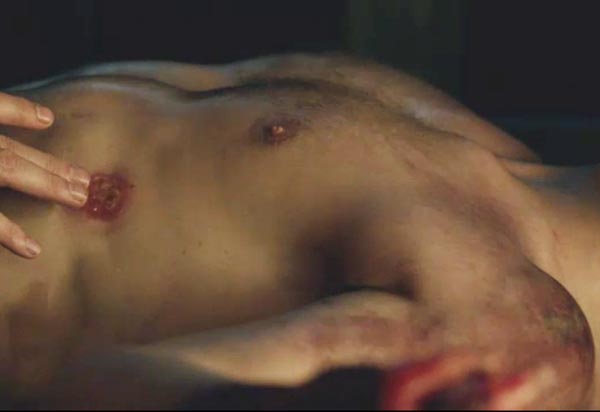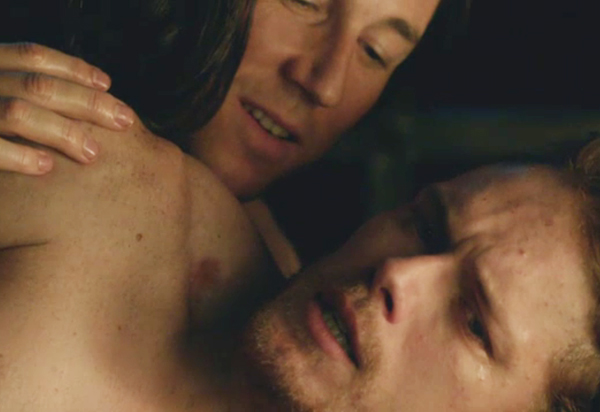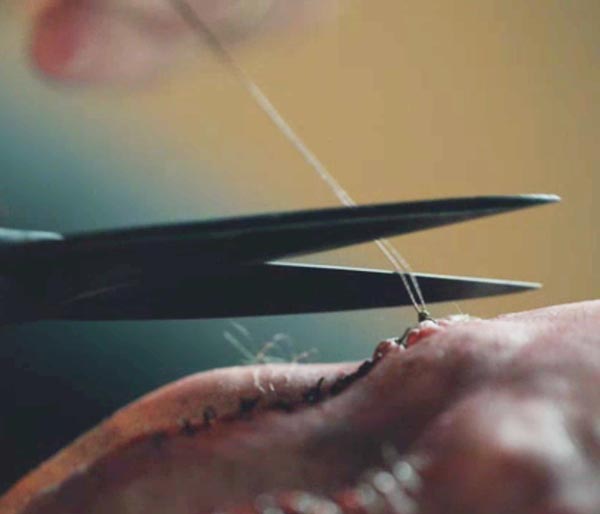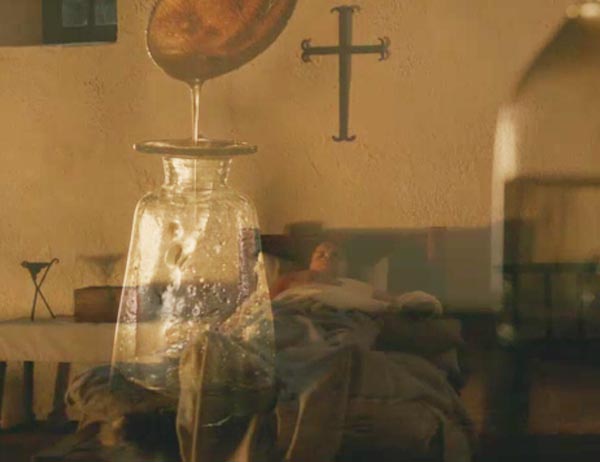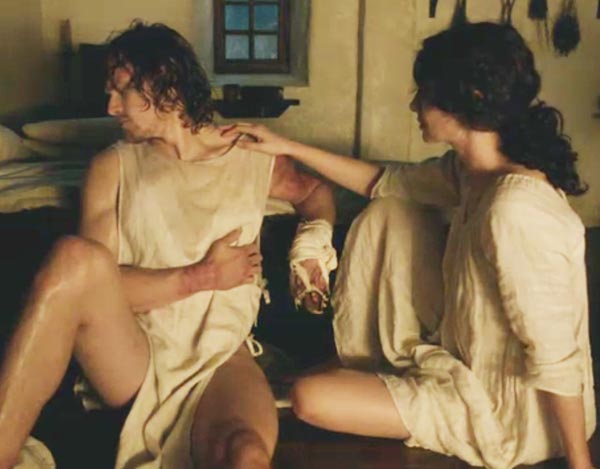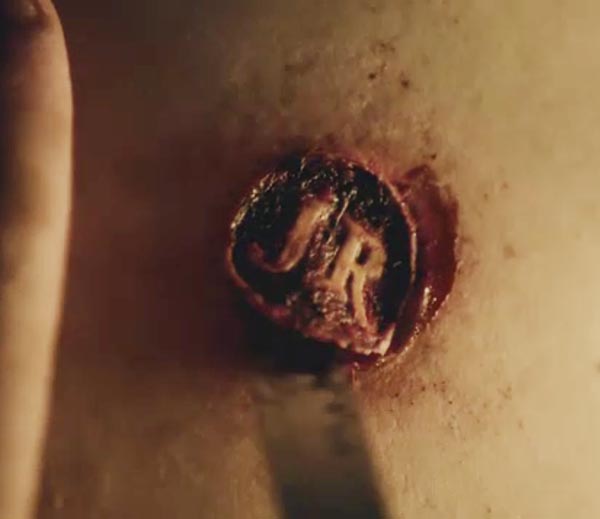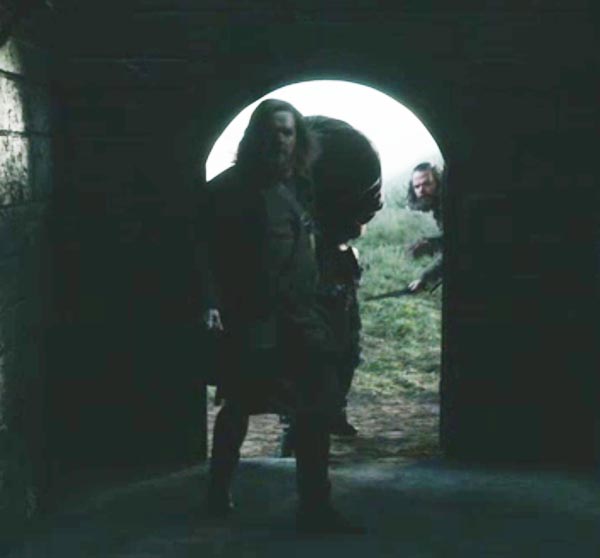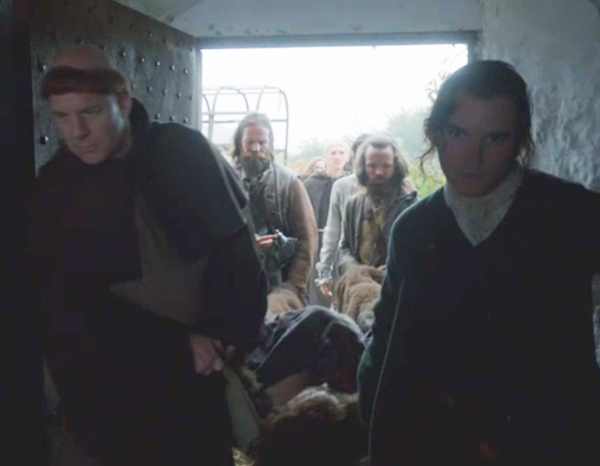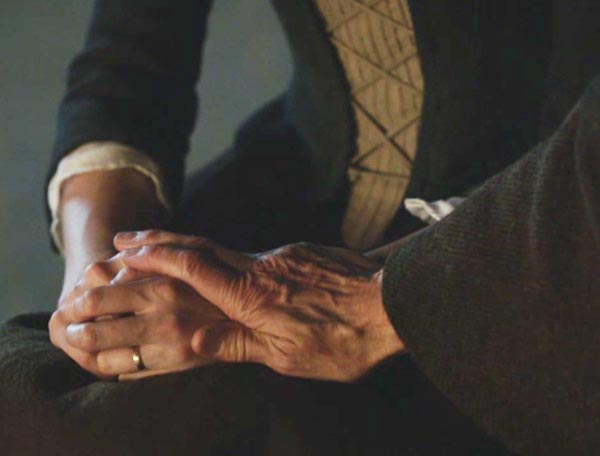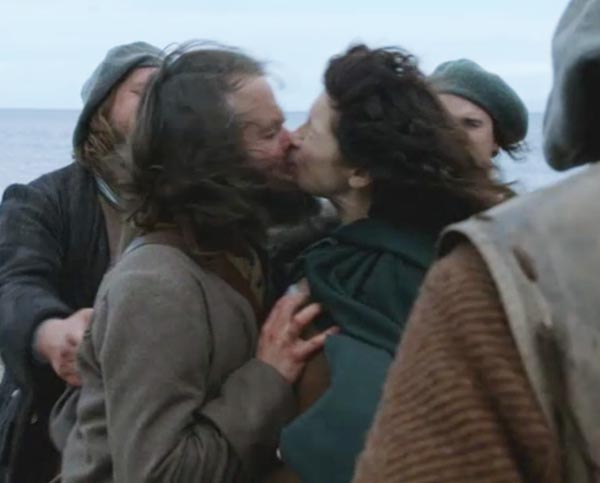Welcome to summer school Outlander Anatomy students! Today’s topic is Anatomy Lesson #24: The Ear – Part I so listen up! We’ll start with a Starz Outlander scene followed by the anatomy lesson, then a short quiz and end with a Pinna Poll (you’ll soon know what that is grasshopper!). Are you game? Of course you are – it’s summah time and the livin’ is easy!
I’m saying it right up front: the ear is one of the body’s most elegant organs. Yes, I ken I already “handed” that distinction to the hand, but surely there’s room on the winner’s podium for yet another awesome body part? This one truly deserves our collective “Hear, Here!”
I started planning an ear lesson waaaay back during Starz episode 3, The Way Out. Remember the tanner’s lad whose ear was nailed to the pillory? Herself describes the scene in Outlander book:
He had in his custody a youth, perhaps twelve years old… a tanner’s lad. The priest had the boy gripped… the crowd drew back a bit to allow the locksman free movement for the ear-nailing. The lad… uttered a high, thin scream when the nail was driven in…
Ouch! After an hour nailed to the pillory, the two-bannock thief is free to go but first he must tear his ear free! Cute cagey Claire is no having that! She drags Jamie MacTavish into a 20th century freedom march for the lad; she will feign a faint for crowd control while Jamie has a chit-chat with the wee laddie. Again, from Outlander book:
‘Na then, lad, he said clicking his tongue. Got yourself in a rare swivet, have ye no? Och, laddie… yon’s no job to be making heavy weather of. A wee snatch o’ the head and its over. Here shall I help ye?
And, continuing the quote:
The ear was pinned firmly through the upper flange, close to the edge, and a full two inches of the nail’s square, headless shank was free….
So, Mr. MacTavish grabs the nail with his looong strong fingers (Aye, we all ken the fine work they do. Snort!) and lickety-split out comes the spike! Hie home lucky laddie!
That likely got us in the mood, so let’s get on with the anatomy lesson: the ear is very important for our well-being. Those who have suffered hearing and/or balance loss can attest to the importance of sensory input provided by the ear. Herself writes about such loss in “Written in My Own Heart’s Blood.”
…Artilleryman, from his uniform. So something big had exploded near him— a mortar, a cannon?— and not only burned his face nearly to the bone but also likely burst both his eardrums and disturbed the balance of his inner ear.
Yep, she’s right! The Human ear is the organ that collects, processes and interprets sound waves as well as aids in balance and awareness of head position. The paired ears of vertebrates are symmetrically placed on opposite sides of the head for the purpose of localizing sound sources; if only one ear is operative, the direction and distance from which a sound arises is difficult to pinpoint.
We often refer to these visible flaps of flesh as the ears but this is only the beginning (Photo A – left ear).
Photo A
Have you read Diana Gabaldon’s article about story telling and the Rule of Three? Well, you may be surprised to learn that anatomy also has a Rule of Three as many body parts come in trios (like Jamie’s acromion, clavicle and humerus – see Anatomy Lessons #3, #19 and #20) and we will cover several in this lesson.
The human ear actually includes three distinct ears: an outer ear (Photo B – green overlay), a middle ear (Photo B – yellow overlay), and an inner ear (Photo B – blue overlay). Today’s lesson will cover only the outer (external) ear.
Photo B
The outer ear consists of three (yes, three) parts: ear flap, ear canal and outer layer of the ear drum (Photo C). Anatomy has two names for the ear flap and either one works: pinna (Latin meaning feather or wing) or auricle (Latin meaning ear). The ear canal is the external acoustic meatus (Latin meaning passage). The ear drum is the tympanic (Greek meaning to strike) membrane. Let’s examine each of these three parts.
Photo C
But, wait! First, do you recall from Anatomy Lesson #6 that finger print whorls are formed by dermal ridges and the pattern is unique to each human? Even humans with identical DNA (e.g. identical twins) do not have identical finger prints (Photo D – small dots are openings of sweat gland ducts).
Photo D
In a similar vein (ha ha), the venous pattern on the dorsum of hand (Anatomy Lesson #22 & Anatomy Lesson #23) is entirely unique to an individual; so much so, that some board examinations now require test takers to undergo an infrared scan of the hand venous network for identification purposes as it is more reliable and interpretable than a fingerprint (Photo E).
Photo E
Hmmm, has this prof’s mind gone bye-bye? Why is she writing about fingerprints and hand venous patterns when the lesson is about the ear? Because, I want to emphasize a small cohort of unique body parts which includes the pinna as no two are alike. The pinna bears hills and valleys all of which are named (this is how anatomists make a living) but its overall shape and relationships are unique to its owner.
The pinna includes a fleshy earlobe/auricular lobule (Photo F – blue overlay) and the rest of the ear flap (Photo F – green overlay). The earlobe is soft and flexible because it is made of skin and collagen.
Photo F
One can even find references to the earlobe in Diana’s books (I swear anatomy abounds in her written works). This quote from Outlander book:
I wriggled closer and pulled Jamie’s head down as though overcome by amorousness. “What is it?” I whispered in his ear. He seized my earlobe between his teeth and whispered back. “The horses are restless. Someone’s near.
The way earlobes connect to facial skin is an interesting and disputed topic. Common wisdom is that earlobes come in two varieties: attached, wherein the lobe slopes to connect with facial skin (Photo G – red arrow) or free, wherein a distinct cleft separates earlobe from facial skin (Photo G – blue arrow). Science teachers often teach basic Mendelian genetics using earlobes as an example: earlobes are either free or attached and this trait is controlled by a single gene. But family studies have shown that this is not so. There is a broad range of earlobes all the way from “free” to “attached” with many variations in between. This range means that lobe attachment is a multifactorial trait that is not determined by a single gene.
Try this: check out your earlobes and those of friends and family. Are the lobes attached, free or some variant between the two? Do your earlobes look like those of your father or mother? What about your biological children – do their earlobes look like yours or those of the other parent?
Photo G
The remainder of the pinna is well-defined with skin tightly bound to an underlying endoskeleton of cartilage (Photo F – green overlay). The body contains three types (Three, again. I kid you not!) of cartilage: hyaline cartilage covers the surfaces of moveable joints; fibrocartilage forms much of an intervertebral disc and elastic cartilage shapes most of the pinna. (NOTE: the three cartilage types are found in other sites too but these will be covered in later lessons). The curved elastic cartilage of the pinna is complex with elevations and depressions; it also forms the outer 1/3 of the ear canal (Photo H – dissected human auricular cartilage of right ear).
Try this: fold one of your pinnae (pl.) down and release – it immediately springs back to its normal configuration. This is because elastic cartilage contains special elastic fibers that have shape memory (sort of like Spanx!). Now, this next image may be a bit gross (it is gross anatomy, after all) but pretend it’s Play-Doh!
Photo H
Next, let’s examine details of the pinna. The outer rim of the pinna is the curled helix extending from just above the ear canal to the earlobe (Photo I – yellow arrow); it looks like a bit like a question mark – ? – with the lobe serving as the dot. Roughly 10-11% of people bear a nodule on the upper helix known as “Darwin’s tubercle” (Photo I – black arrow), a bump that may represent the point of the mammalian ear (Photo I – white arrow). First described by Charles Darwin in The Descent of Man (1879) as the Woolnerian tip (sounds like something Angus might find betwixt his toes or Rupert might have in his beard), for decades it has been considered a dominant genetic trait controlled by a single gene. Again, family studies have also shown this is not so.
Stay tuned! Science does stumble, but its general direction is onward and upward!
Photo I
Now moving inward, the next mound (ahh…such a great anatomical word…describes so many…oops, I digress) is the stout Y-shaped antihelix (Photo J). The tragus (Greek meaning goat) is a mound (hee hee, there it is again! Say it with me…m-o-u-n-d) covering the opening of the ear canal, so named for a conspicuous tuft of hair that often graces its surface in men. Opposite the tragus is a small hillock the antitragus (Photo J).
Try this: Feel one of your pinnae (pl.) and note that although the earlobe (auricular lobule) is very flexible, the skin overlying the remainder of the pinna is tightly bound to the underlying cartilage. Palpate the curve of one helix; do you have a Darwin’s tubercle? It may be absent from both pinnae, present in one but not the other, or present in both. Check out Photo J or use a partner (I am a huge fan of playing doctor – extra credit for students who do!) to identify Darwin’s tubercle, helix, antihelix, tragus, and antitragus.
Photo J
Between elevations (another great word…quick! Name three body parts that can elevate!) of the pinna are valleys and depressions. The trough-like scapha separates helix and antihelix; the cymba of the concha is a pit in front of the upper antihelix; the cavity of the concha is the major depression leading to the ear canal. Finally a cleft between tragus and antitragus is the intertragic notch (Photo K).
Photo K
So, how do pinnae make a living? The complex array of bumps, depressions and whorls of each pinna is designed to gather sound waves from the environment and transmit them to the ear canal. But, here’s a fine fascinating factoid: the oddly-shaped pinna can also slightly amplify (increase) or attenuate (decrease) sounds of certain frequencies. Yes it can!
I will likely get shot down for this next comment, but you understand that the pinna wasn’t designed for hanging earrings, seating earplugs or hosting earspools (Photo L)? Sure we all do it; just saying!
Piercing earlobes has been done successfully for eons but the now popular ear cartilage piercings are cause for a bit more concern. Why? Cartilage has no blood supply and because it is bloodless, defensive/immune cells or antibiotics are more difficult to deliver when needed to fight infection. Thus, chondritis (inflammation of cartilage) or pericondritis (inflammation of the covering of cartilage) can be challenging to treat and if unchecked, either can seriously deform the pinna.
Photo L
Here’s an interesting Clinical Correlation on the pinna: defects of the pinna are not uncommon and include abnormal folds or location of the pinna, low-set ears, no opening to the ear canal, small pinna or no pinna or ear canal (anotia). Microtia (Latin meaning small ear) is a condition in which the pinna is small and/or distorted. Reconstruction of the pinna is a sophisticated multistep process in which either “harvested” cartilage or synthetic material is skillfully configured to mimic the shape of the pinna cartilage and inserted beneath the pinna skin. The results can truly be remarkable as shown in this series of photos over time (Photo M).
Photo M
Now, we all ken that many mammals turn their pinnae together or even independently. Such creatures have strong auricular muscles that swivel the pinnae to more effectively collect, modify and direct sound waves into the ear canal (Photo N – impala).
Photo N
We humans are equipped with three auricular muscles (anterior, superior & posterior) per pinna. However, these are so dinky they can’t effectively move the pinnae for sound wave collection (Photo O). Most humans I know are proud if they can pull back/wiggle their ears even a wee bit. What this doc wants to know is can Dougal wiggle his ears?
Photo O
Moving inward, the next structure is the ear canal or external acoustic meatus (EAM). I swear everything anatomical eventually appears in Diana’s books. Claire has just traveled through the stones and meets Jonathan Randall, Esq., Captain of his Majesty’s Eighth Dragoons (Outlander book):
I had by this time recovered my breath, and I used it. I screamed directly into his earhole, and he jerked as though I had run a hot wire into it. I took advantage of the movement to get my knee up, and jabbed it into his exposed side, sending him sprawling into the leaf mold.
Yep. You have to love it even though earhole isn’t a scientific term and yet, very close to another word (may I have an A please, Pat?) I frequently use for the wicked Wolverton wretch. Ha!
EAM is about 2.5 cm (1”) long with a slightly S-shaped path that slopes forward, inward and downward. It is lined with thin skin sporting protective hairs and ceruminous (wax) glands. The first part of the wall contains elastic cartilage (Photo P – black arrow) but bone encircles the rest of the canal (Photo P – red arrow). Throughout the EAM skin tightly adheres to the underlying cartilage or bone; for this reason, a disturbance as innocuous as a blackhead (comedone) can be very painful as there is little room to accommodate swelling and/or inflammation. I’m going to digress again for a moment but can you imagine getting a blackhead in your ear canal in the 18th Century? No wait, don’t answer that. Moving on!
Photo P
The purpose of the EAM is to modify, direct and deliver sound waves to the ear drum. Although kids will likely disagree, the canal is not for housing beans, peas, BBs, toys, gum, paperclips, etc. (Photo Q)! One does have to wonder though what sorts of items Angus stored in his pinna…
Photo Q
Speak o’ the devil himself…a big shout out to Professor Angus – not only is he good with a sgian dubh (Anatomy Lesson #15), he demos how polite wedding guests should clean the EAM (Starz episode 107, The Wedding). Och, for safety sake, inserting anything smaller than a pinky finger into the ear canal is unwise!
Finally we arrive at the third part of the outer ear, the ear drum or tympanic membrane (TM). TM is a membranous sheet that stretches across EAM and separates outer and middle ears. Photo R shows the external surface of the right TM. Only two of about 10 parts are labelled: the malleus is a small bone of the middle ear and the cone of light is a reflection from the beam of an otoscope.
Photo R
Drawings are great but they may fail to capture subtle details easily revealed in a photograph. If a health care provider examines a normal TM using an otoscope, (s)he sees this image (Photo S – right TM): the red arrow marks the handle of malleus and the blue arrow indicates the cone of light. Infections of the middle ear, perforations, blockages or other disturbances are readily identified using this remarkable instrument. The first time I saw the TM of a volunteer student via otoscope, I squealed (not in her ear, mind you – was a she); it was an absolutely awesome experience!
Photo S
OK, you paid attention very well! Pop Quiz time! Pull out paper and pencil and let’s see how you do. There are five questions followed by five answers. Keep score to determine your grade at the end.
Question #1: Name the bump at the tip of the black arrow.
Answer #1: Darwin’s tubercle. Verra guid! Here, Father Bain smells the “vapors of hell” on Claire (Starz episode 103, The Way Out) because her medical meddling endangers Tammas Baxter’s immortal soul!
Question #2: Name the mound at the tip of the red arrow.
Answer #2: Antihelix. The good Father hears Claire’s remarkable confession no doubt aided by this Y-shaped mound of cartilage and skin (Starz episode 116, To Ransom A Man’s Soul).
Question #3: Name the mound at the tip of the red arrow.
Answer #3: Tragus. Excellent! Ye can barely see the tragus because it’s covered by all the long red curls. Jamie messes with Claire’s ears in this scene (Starz episode 102, Castle Leoch) as Herself informs us in Outlander book:
The lad had nice feelings… he sat down, gathered me firmly onto his lap with his good arm and sat rocking me gently, muttering soft Gaelic in my ear and smoothing my hair with one hand.”… No wonder he was good with horses, I thought blearily, feeling his fingers rubbing gently behind my ears, listening to the soothing, incomprehensible speech. If I were a horse, I’d let him ride me anywhere.
Question #4: Name the gap at the tip of the arrow.
Answer #4: Intertragic notch. Does this notch really lie between two tragedies? Weel, sort of: puir Tammas Baxter lies ‘tween Claire’s belladonna decoction and Father Bain’s “driving out the demon” approach to universal health care (Starz episode 103, The Way Out)! But, Mrs. Fitz saves the day!
Question #5: Is darling Roger’s wee earlobe (lobule of the auricle) attached or free?
Answer #5: Free. Have ye ever seen a sweeter face (Starz episode 109, Both Sides Now)? What a cutie. May he have another biscuit, please? True story: when one of my grandsons was about wee Roger’s age, he called his earlobes, ear loaves. Butter mine please!
How did you do with the self-graded pop quiz? 5 of 5 is a AAAAA; 4 of 5 is an AAAA; 3 of 5 is an AAA; 2 of 5 is an AA; 1 of 5 is an A; but 0 of 5 is a “please reread the ear lesson!”
Okey dokey, now it’s time for the fun part, the PINNA POLL: which one of the following pinnae do you like BEST? There are six choices and all are awesome so please choose your favorite and leave your vote in the comments! The votes will be tallied and reported at the next anatomy lesson.
First up is Dougal MacKenzie, Jamie’s favorite Jacobite uncle on his mum’s side (Starz episode 109, The Reckoning). He’s pissed because Colum snags a bag of gold meant for the “bonny Stewart Prince across the water!” Isn’t his helix absolutely fab!
Next is Geillis, wife of “the man knows no guile” Arthur Duncan, procurator fiscal of Cranesmuir (Starz, episode 103, The Way Out). This wily witch has a one beguiling pinna and plenty of guile to go around!
Then, the villain that everyone loves to hate, BJR (Starz episode 115, Wentworth Prison)! Being an officer and a gentleman (yeah, right), he’ll not give into his baser instincts. Vote for his pinna if you like it best.
Next we have Murtagh, everyone’s favorite godfather. It’s snowing so his pinna is chilled to the cartilage. He is just about to hock a big ol’ loogie to demo Dougal-disdain (Starz episode 109, The Reckoning). No love lost between those two! Does your vote go for Murtagh’s pinna?
Next up is Claire’s beautiful, wing-like pinna– it looks like porcelain illuminate by the light. NO Jamie, she doesna want to tell her secrets to Geillis (Starz episode 103, The Way Out). Take her outta the fiscal’s house you big, gorgeous strong-fingered hunk!
Finally, for the last pinna of the poll! Actually I think this is only time Jamie’s pinna is fully exposed during the entire season one (Starz episode 116, To Ransom a Man’s Soul). Claire’s fingers “ached, wanting to trace the line of his small, neat ear …” (Outlander book). Need an ear rub Jamie? Snuggle up!
The middle and inner ears will be covered in our next anatomy lesson, but for now, please understand this: sound waves must travel through gas/air (outer ear), solid (middle ear) and liquid (inner ear) before they are converted into electrical signals that make their way to the brain. The brain translates the electrical signals into a “sound” that we can recognize and understand.
Thanks for playing along! Remember that the outer ear is all about augmenting the hearing function of the ear; it isn’t involved in balance. We’ll learn about hearing and balance in the next lesson. Until then, enjoy stanza III from “The Bells,” a poem by Edgar Allan Poe (1809-1849):
Yet the ear, it fully knows,
By the twanging,
And the clanging,
How the danger ebbs and flows;
Yet, the ear distinctly tells,
In the jangling,
And the wrangling,
How the danger sinks and swells,
By the sinking or the swelling in the anger of the bells–
Of the bells–
Of the bells, bells, bells, bells,
Bells, bells, bells–
In the clamour and the clangour of the bells!
The Deeply Grateful,
Outlander Anatomist
photo creds: Starz, Gray’s Atlas of Anatomy for Students, 2005, Human Anatomy by Martini and Timmons, 1995, Netter’s Atlas of Human Anatomy, 4th ed., Clinically Oriented Anatomy, 5th ed., www.blissbiology.wordpress.com (free & attached earlobes), www.clker.com (pinna), www.nola.com (toys from ear), www.pinna.hawkelibrary.com (elastic cartilage), www.karenscottaudiology.com (three parts of ear), www.microtia.us.com (microtia), www.si.wikipedia.org (Darwin’s tubercle & earplugs), www.wikipedia.org (impala), www.s1.zetaboards.com (attached & free earlobes)

